by Wallace Wyss –
How does one explain love? I won’t go into the biology imperatives of humans, but as far as cars, there is a certain thing I am looking for—a homage to the early days of ‘50s aero—and I think I have found a car I could theoretically be in love with. I haven’t seen one in person yet though.
This could be like one of those over-the-internet love affairs where the lady sends you decades-old pictures of herself before she gained the 50 lbs. lost her hair, etc.
Anyhow there’s another obstacle, I have observed, having once been a part of the game in advertising, and I suspect that the reason they used so many paintings in early ‘50s car ads is that some automakers were actively mis-representing the size of the cars. (when I worked for ad agencies in Detroit we would have special lenses we put on cameras to stretch cars optically and make them look longer, lower and wider as well as hiring short but well proportioned models).
Take this Austin Atlantic painting. Real people, say 5’6” tall, would be a lot taller in real life than the ones pictured here but instead they populate the illustration with 4/5ths scale people. I realize that first generation after the war, deprived of meat during the war, Brits were a bit short but who are they fooling?
The A90 Atlantic was first built in prototype form in 1947, being the first British car to be designed for the U.S market. Upon its introduction in 1948, things looked bullish.
It had modern styling, with full length front wings not unlike some Rolls Royce and Bentley cars. Think of these cars as wanna-be imitators of the rich.
And, egad, man, it had a power top that could have that rag over your bowler in around 22 seconds. Other inclusions were the Ecko radio, adjustable steering and heating. Heat! Damn they were flat spoiling the lads.
The engine was a four cylinder overhead valve inline displacing 2660 cc rated at 88 hp. The trans was a four-speed manual.
It could top 145 km/h, which sounds risky to me. The zero-to-sixty time was more like
16.6 seconds and they were promising 25 mpg.
As a publicity stunt, an Atlantic broke 63 American stock car records over 7 days, in Indianapolis. But it didn’t sell. Austin, in desperation, slashed $1,000 from its price in 1949 and, in 1951, introduced a fixed-head saloon with hydraulic brakes and a lower axle ratio. But the convertible, my future love, was dropped in 1951. The saloon struggled one more year until it was mercifully killed off by the BMC merger.
I have no idea of how many survived out of the 7,981 built.
One Australian website predicted 150 cars, with about 70 in Oz, made up of both convertibles and hardtops (coupes). This is one of those cars that the cost of shipping to America from Oz would exceed the value of the car.
And did I mention I hate the front end styling? How disappointing to have an acceptable rear, a beautiful side treatment and then an ugly-as-sin nose. I put that down to Britain being an island and British designers were so poorly paid they couldn’t afford to cross the channel to the auto shows so they didn’t know about the beautiful cars being designed in France and Italy.
Anyway I thought I’d write about it. Maybe when I see one in person I will still love it.
Or not…
Let us know what you think in the Comments.
Wallace Wyss
THE AUTHOR: Wallace Wyss is the author of 18 car histories and the novel, Ferrari Hunters.
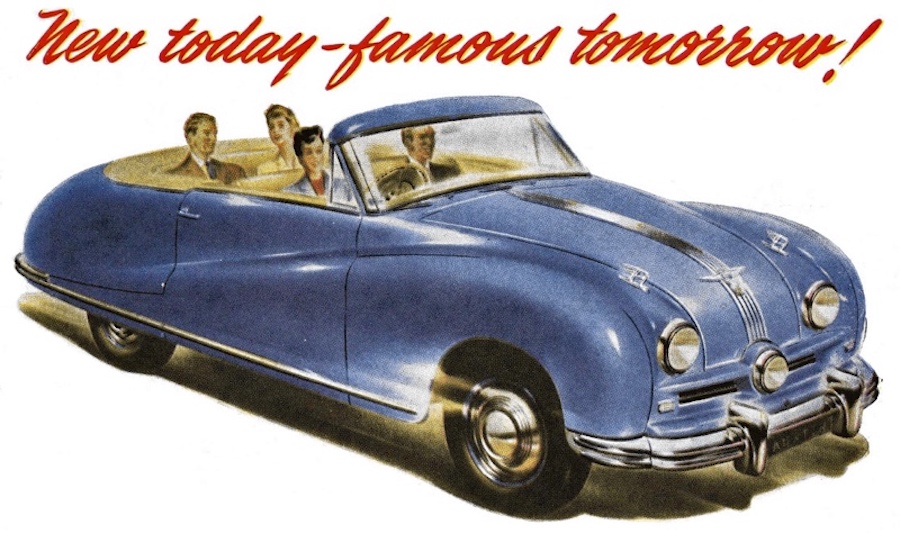
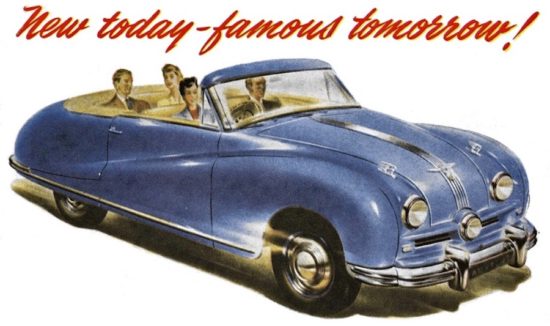
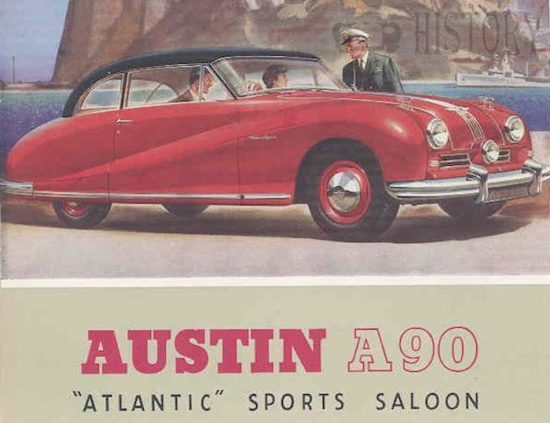
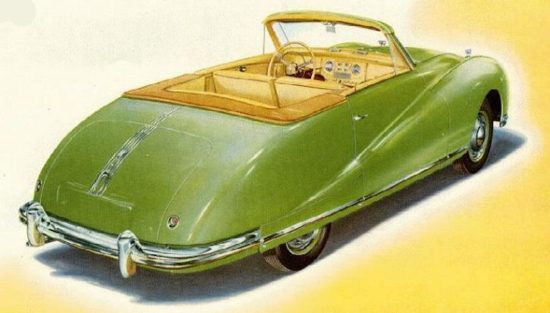
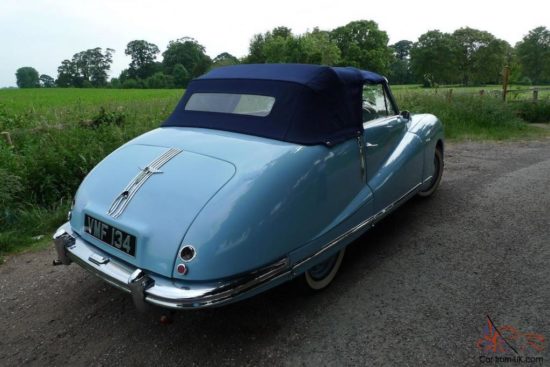
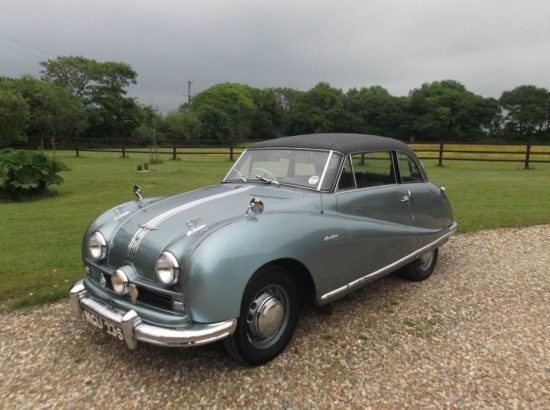
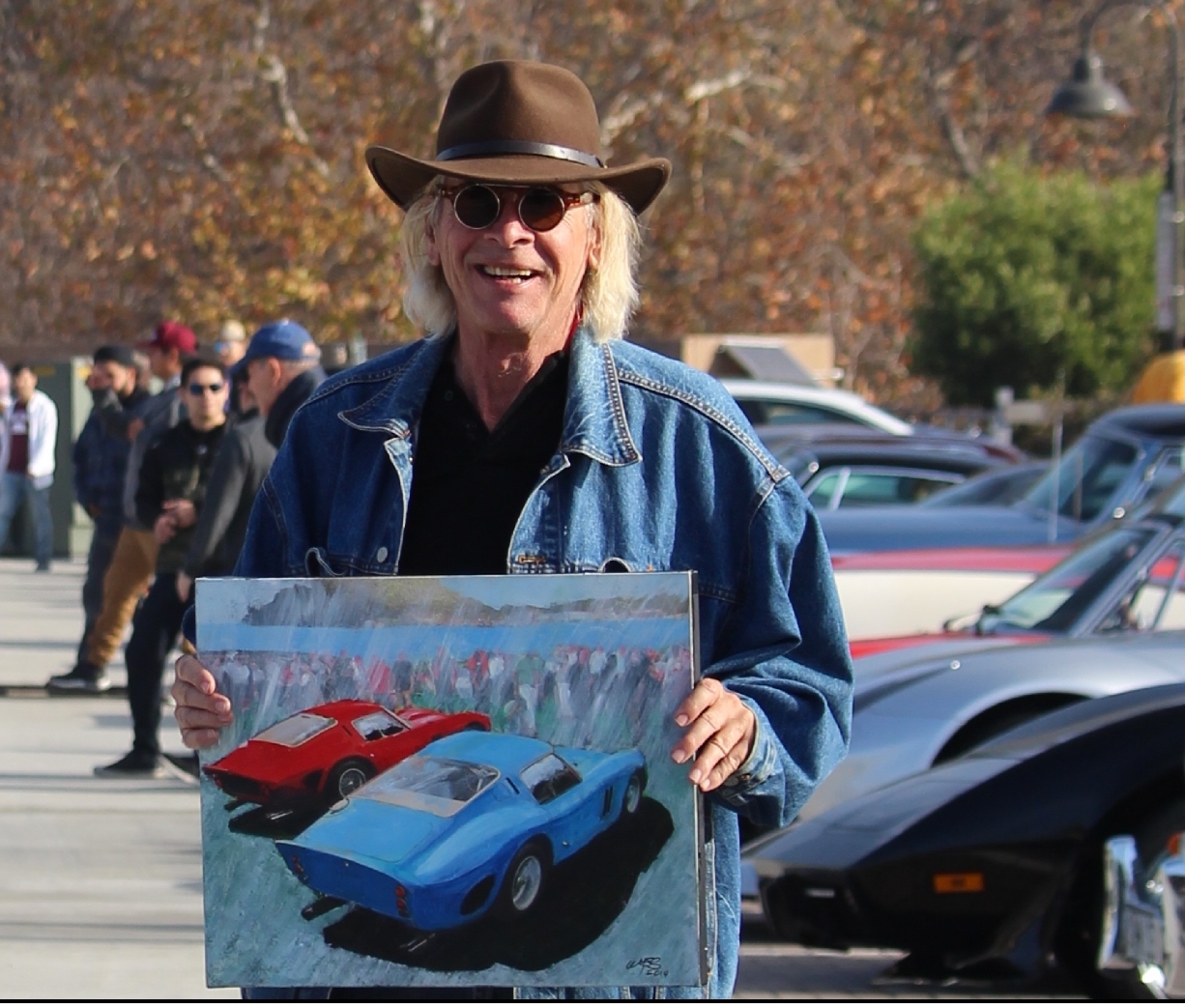
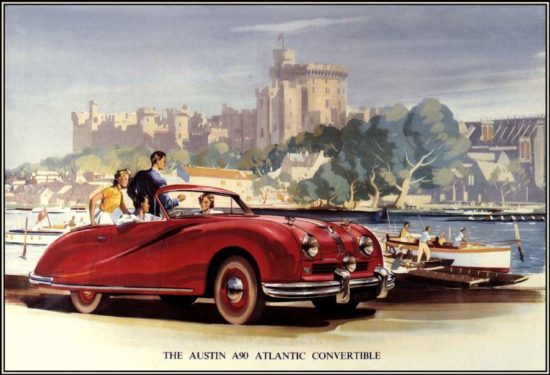


Were it not for that middle headlamp the front would not be nearly so objectionable… Kind of a British Hudson if you will… while I have never seen one in the flesh I have seen pictures of them for years and also find it an over all very handsome car. Clever windshield treatment.
They did have the same motor that was later fitted to the Healey 100 , but because of their weight did not perform all that well , especially next to American V8’s and the release of the Jaguar XK120 at the same time basically killed sales to sports car enthusiasts . If fitted with the hydraulic soft top roof , the windows were also hydraulically operated . Believe it or not there is still an A90 Atlantic car club in Australia .
The whole front end looks like some really cheap car (Crosley?) but I think they could have copied early Lagonda front end or even Bristol. One thing that is funny is, in the drawing the tailights are small but on the real car they are too big for an elegant look, same is true of gas cap. Once automakers dropped paintings we got to see what cars really looked like (and yes, we even manipulated those photos when I was in advertising….)
THE AUSTIN 90, WOULD BE A QUIRKY , FUN CAR TO OWN AND DRIVE AROUND
My first, a coupe, took me 300,000 miles
My second, a convertible —-475,000 miles
My third, a coupe—around 10,000 ( it was a fill in”
My fourth, the only known surviving prototype, acquired in 2000, took 6-1/2 years to rebuild, has a more restful life,travelling only 8,000 since completing it in 2008
Now retired, I am currently rebuilding my first coupe, expected to be completed perhaps 2021.
There are about 125 in Australia, split roughly 50-50
WOW! U DRIVE A LOT. OR OVER HOW MANY YEARS? I HAVE OWNED OVER 100 CARS, OVER 63 YEARS OF DRIVING. SO, I HAVE NOT PUT TOO MANY MILES ON ANY OF THEM.
The Atlantic was actually extremely well made and very advanced for 1948. It was just too costly at the time. Beautiful especially when actually seen. The engine was very advanced with overhead valves and forged components. The engine was later raced at Le Mans as the 100S. An indication of their quality and popularity is that 70 years later you can buy brand new precision made engine components including new computer designed and machined heads. Atlantics today are rare nevertheless the car creates quite an impression when taken out. It is simply beautiful
12.15.19
_I_ like it and would love to have a FHC .
-Nate